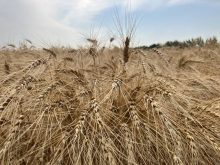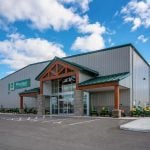Effective Feb. 1, Canadian dairy farmers will see a boost in the prices they receive for industrial milk, used in the food manufacturing business.
As a result, consumers will see an increase in the price of products made from milk or butterfat, likely beginning in the spring, and the restaurant and food services lobby predicts there could be job losses.
It is the first increase in industrial milk prices since Aug. 1, 1996.
The Canadian Dairy Commission decided to increase the support price for skim milk powder by 5.4 percent and for butter by 1.2 percent despite a strong public and private lobby by the restaurant trade.
Read Also
Man charged after assault at grain elevator
RCMP have charged a 51-year-old Weyburn man after an altercation at the Pioneer elevator at Corinne, Sask. July 22.
The CDC said price hikes are justified to offset cost-of-production increases during the past 18 months and to compensate farmers for the loss of the federal dairy subsidy, which on Feb. 1 starts a five-year slide to zero.
“While consumer prices are affected by a number of factors, this pricing decision will likely lead to an overall increase in dairy product prices of slightly less than three percent,” CDC chair Guy Jacob said when he announced the increase Dec. 12.
Opponents of the increase disagreed. They predicted the prices of some products such as low-fat mozzarella pizza cheese will increase five percent or more.
“We are enormously disappointed,” said Kathleen Sullivan, director of government affairs for the Canadian Restaurant and Foodservices Association, which lobbied against any milk price increase. “We are talking at least a $40 million cost increase for the industry and it has to come out of someone’s pocket, with consumer prices or our payrolls.”
Last week, the restaurant industry took the unusual step of organizing a public lobby against an increase and carrying several thousand postcards from member companies to CDC offices and the offices of agriculture minister Lyle Vanclief. The minister refused to intervene.
The CDC noted dairy prices have increased less than general food inflation during the past decade.
And Dairy Farmers of Canada fired back with a statement accusing the restaurant lobbyists of overstating the issue and blaming farmers for costs that come from others.
“If a glass of milk currently costs $1.50 in a restaurant, the milk producer’s share is 16 cents, the processor gets eight cents and the restaurant makes $1.26,” said the DFC statement.
















